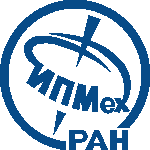
|
ИСТИНА |
Войти в систему Регистрация |
ИПМех РАН |
||
Effects of black soldier fly larval frass addition on the winter wheat ecosystem: a mesocosm experimentстатья
Статья опубликована в высокорейтинговом журнале
Статья опубликована в журнале из списка Web of Science и/или Scopus
Дата последнего поиска статьи во внешних источниках: 4 июня 2025 г.
- Авторы: Goncharov Anton A., Bastrakov Alexander I., Makarova Olga L., Mashkov Kirill A., Maygurova Valentina N., Karpukhin Mikhail M., Kartashov Maksim I., Kuznetsova Natalia A., Sotnikov Ivan V., Tsvelev Ivan D., Tkhakakhova Azida K., Khusainov Renat V., Ushakova Nina A.
- Журнал: European Journal of Soil Biology
- Том: 125
- Год издания: 2025
- Издательство: Elsevier BV
- Местоположение издательства: Netherlands
- Номер статьи: 103734
- DOI: 10.1016/j.ejsobi.2025.103734
- Аннотация: Black Soldier Fly (Hermetia illucens) larval (BSFL) frass demonstrated a pronounced inhibitory effect in vitro onisolates of the soil-borne phytopathogenic fungus Fusarium oxysporum, the causal agent of Fusarium wilt. Nostudies have examined the influence of BSFL frass on Fusarium wilt in crops. To address this gap, we conducted amesocosm experiment to assess the efficacy of BSFL frass (200 g m− 2) added during two different stages of winterwheat seedling growth (simultaneously with sowing or at the tillering stage) on four parameters (study outcomes) that describe the development of Fusarium wilt: plant dry mass, Fusarium wilt incidence, number ofFusarium spp. gene copies in the soil, and biomass of Fusarium spp. in the soil. Soil chemical properties andabundance of key soil invertebrates (Nematoda, Acari and Collembola) were measured to describe mechanisms.Fusarium spp. biomass increased 132 % in the later BSFL frass addition treatment compared to the control (soilwithout BSFL frass amendment). Fusarium wilt incidence decreased non-significantly in both early (3 %) andlater (8 %) addition treatments. Plant dry mass increased 27 % in the early addition treatment, while soilphosphorus concentration increased 21 % in the later addition treatment. Bacterial feeding and predatorynematodes increased 106 % and 65 %, respectively, in the later addition treatment. Mycophagous Acariincreased 106 % in the early addition treatment, while predatory Acari showed five-fold growth in later additiontreatments. The main mechanism of BSFL frass influence appears to be promoting saprotrophic mycobiota andincreasing soluble phosphorus availability for plants.
- Добавил в систему: Карпухин Михаил Михайлович